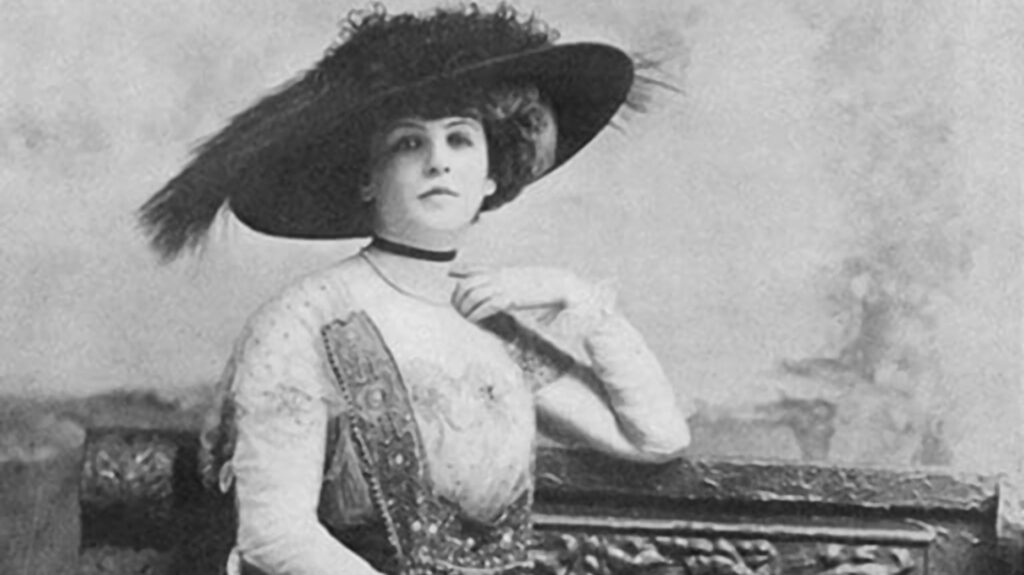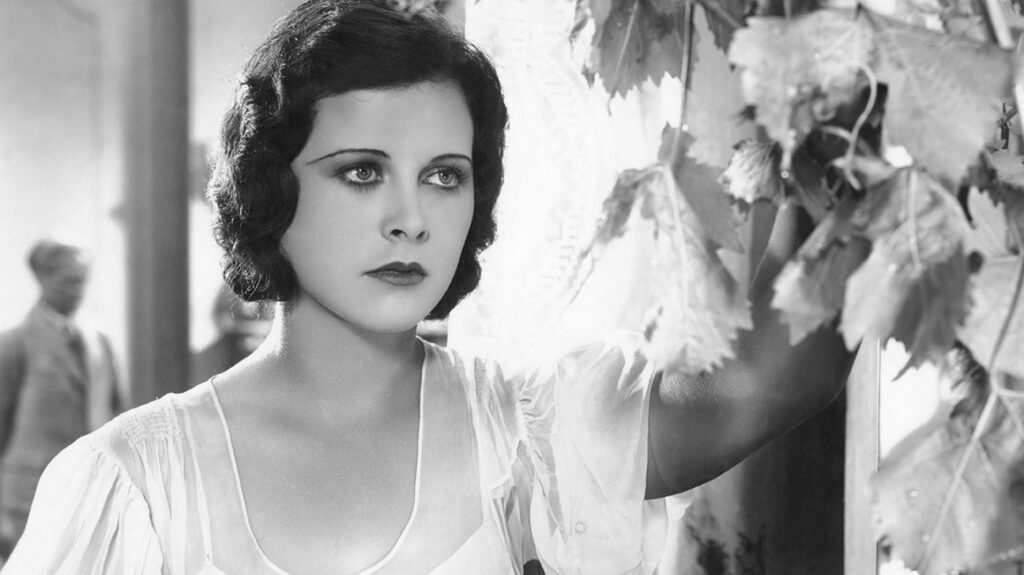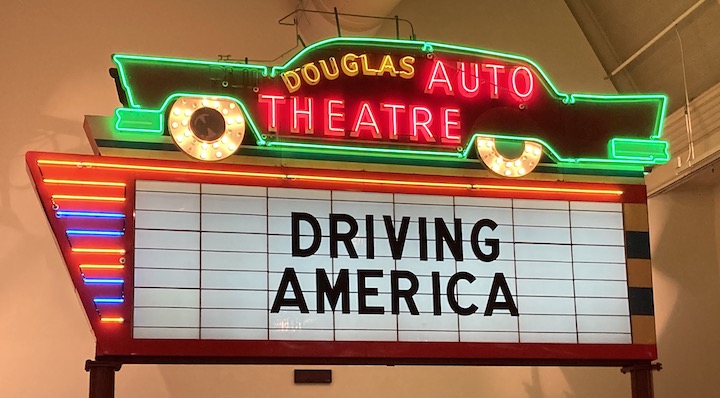
As someone who grew up about a half mile from the city of Dearborn, I have visited the Henry Ford and Greenfield Village many times in my life. But the museum took on new meaning once I began my research into the relationship between women and cars. The Henry Ford Museum of American Innovation, as it is now called, has gone through many updates, redesigns, and reimaginings in my lifetime. Once a confusing collection of artifacts and vehicles, the space is now organized into a number of well-defined areas. The two sections that focus on the automobile – Driving America and Driven to Win – make up just over a third of the museum space.
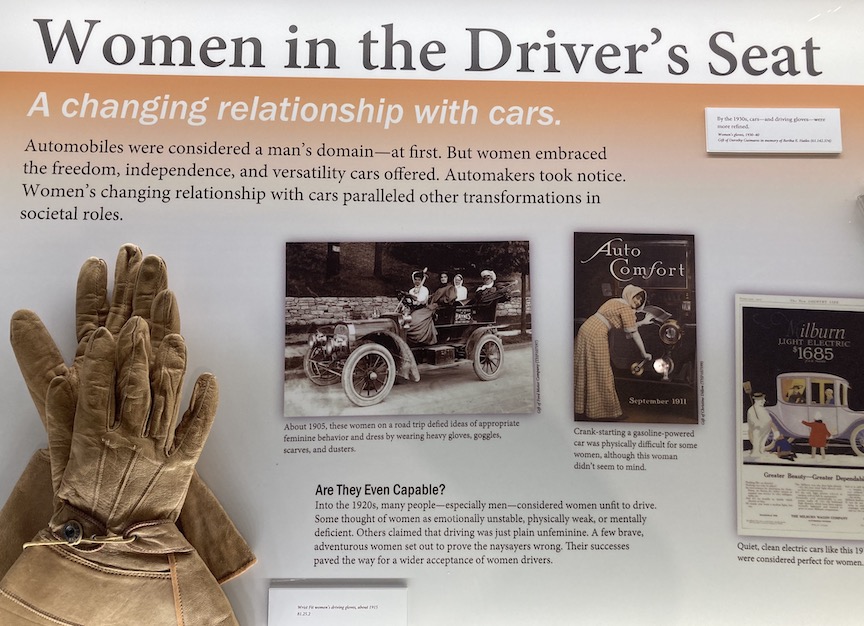
The two driving-themed areas are less about cars than about car culture. As the curator of transportation Matt Anderson states, “the exhibit is not so much about the automobile itself, but about our relationship to it.” Driving America addresses how cars affected American lives, and in turn how American living shaped car culture. While there are certainly a plethora of vehicles on display, the cars most often serveas representatives of a particular era, event, pastime, or purpose. Cultures, institutions, and establishments developed because of the automobile – hotels, service stations, campsites, and roadside restaurants, for example – are integral to the car stories on display.

Driven to Win, the newest exhibit within the Henry Ford, describes itself as a history of racing in America, from soap box derbies to Indy car, stock car, and drag racing. It accomplishes this by focusing on the many innovators and champions of motorsports through interactive displays, historic race cars, artifacts of groundbreaking drivers, racing simulators, and displays that “immerse the visitor in the stories, images, thrills, and sounds of auto racing.”
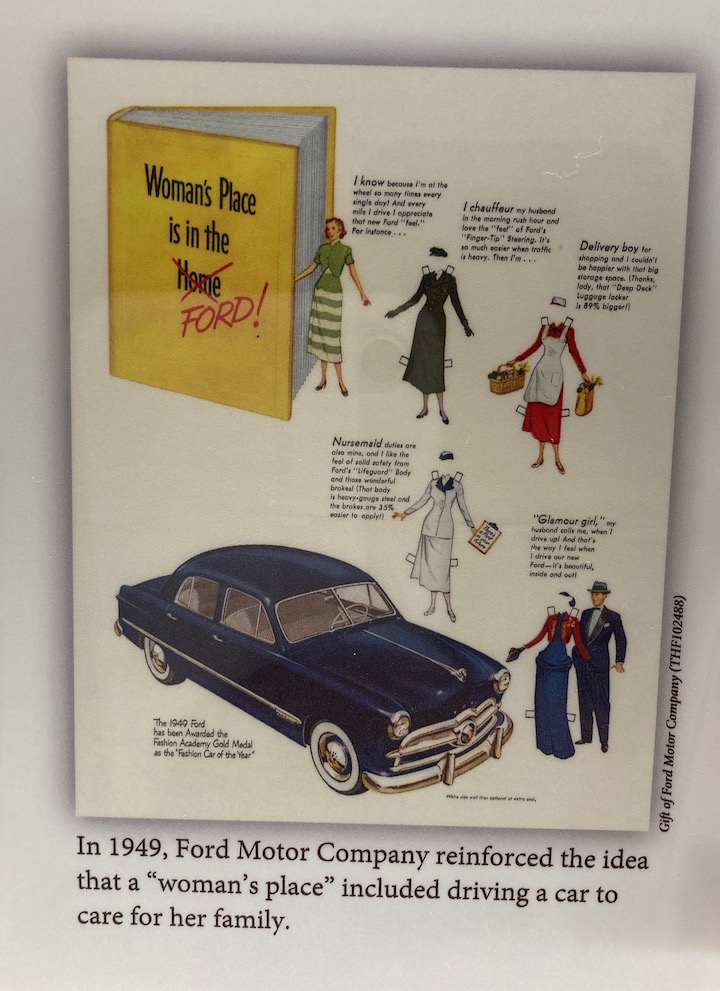
Because the exhibits focus on car culture rather than particular automobiles, women are very much present as consumers, drivers, workers, and influencers. They are introduced as early proponents of bicycles and the Model T as well as the minivan. They are represented in promotions about style, design, and safety. Women’s changing roles in advertising – as objects, symbols, moms, and adventurers are also addressed. While notable women in automotive history make an appearance, it is ordinary woman of extraordinary influence who take center stage.
Driven to Win includes artifacts and success stories of the expected exceptional women in motorsports. However, women behind the scenes – as pit crew workers and mechanics – are also well represented. While women’s relationship to the automobile has historically been relegated to the sidelines, the Henry Ford makes a concentrated effort to incorporate the women driver as an integral participant and contributor to automotive culture.

As I happened to visit the Henry Ford during March – Women’s History Month – many of the exhibits with a female focus were highlighted. Driven to Win featured artifacts of celebrated race drivers including Janet Guthrie, Sarah Fisher, and Danica Patrick. Attention was drawn to a 1955 Chrysler 300, similar to one driven by Vicky Wood – the fastest woman at Daytona. The Ford Rouge Factory Tour featured an opportunity to ‘Meet the Rosies’ as the denim-clad presenters related inspiring stories of the Wonderful Outstanding Women [WOW] who helped win World War II as part of the “The Arsenal of Democracy.’
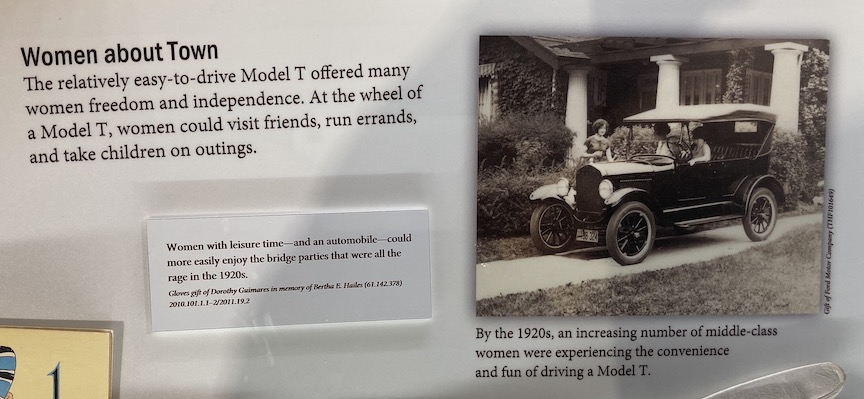
While the ‘typical’ automotive museum focuses on the history of a particular manufacturer or the interests of a generous collector, the Henry Ford employs a broader approach to its significant collection. As the museum CEO notes, ‘we don’t just display the vehicles, we bring the past forward by immersing our visitors in the stories of ingenuity, resourcefulness and innovation that have made America the great country it is today.” And that resourceful past includes the contributions, influence, and participation of the woman behind the wheel.


